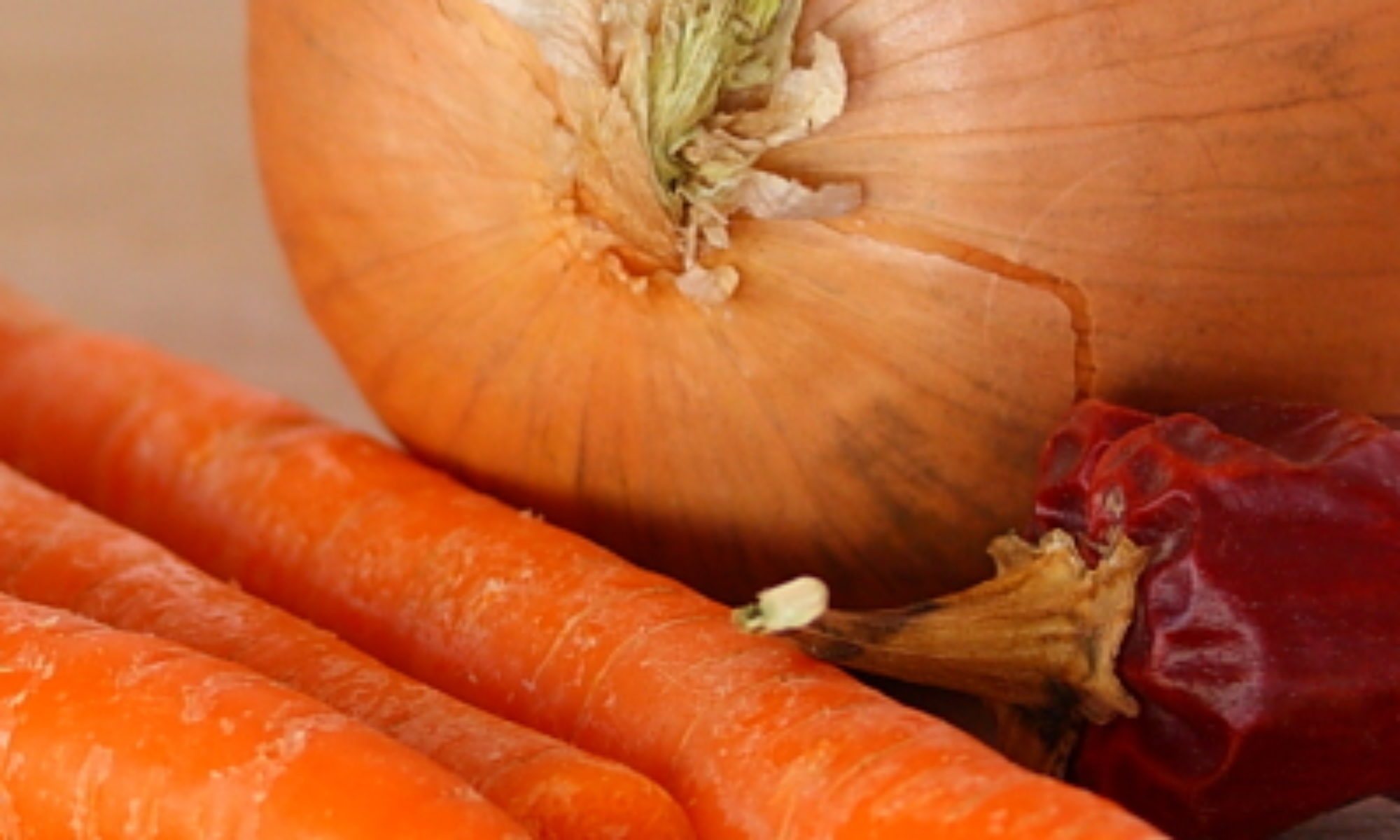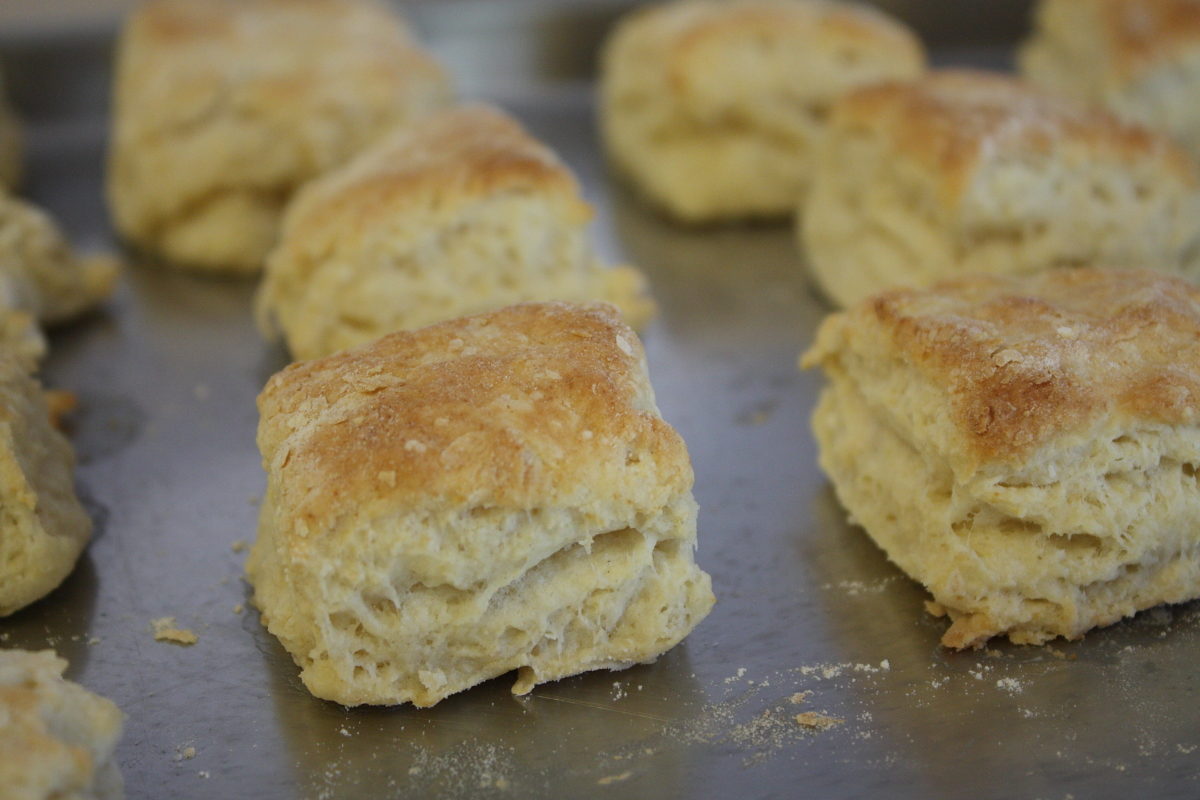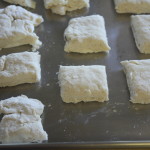Some people say that making good buttermilk biscuits is an art, and so they pick up those poppin’ cans of “dough,” and think that those are good biscuits. While it’s not necessarily an art to make light flaky biscuits, there are a few things you must keep in mind when you’re making the dough. First, work the dough quickly, gently, and knead it only a few times. Second, when you work in the butter, it must be cold (freeze for 15 minutes, if you want), and don’t try to get the butter mixed in uniformly. With these two things in mind, let’s bake!
Oh, and, so I don’t forget to give credit where credit is due, this recipe is modified slightly from Alice Water’s In the Green Kitchen: Techniques to Learn by Heart.
Best-Ever Biscuits
Ingredients
- 2 1/2 cups all-purpose flour
- 3/4 tsp baking soda
- 1 1/2 tsp cream of tartar
- 1/2 Tbs kosher salt
- 5 tbs cold unsalted butter
- 1 cup scratched buttermilk See note
Instructions
- Preheat oven to 450°F. Move a rack to the top of the oven.
- In a bowl combine the baking soda and cream of tartar and mix thoroughly.
- Add flour and salt and mix thoroughly.
- Slice the butter into 1/16-inch thin squares and distribute over the top of the flour.
- Work quickly, pressing each butter slice between your thumb and fingers to press into the flour and make the pieces even thinner. They will break apart. You want to end up with flakes of butter/flour mixture of different sizes.
- Pour the buttermilk over the top, and stir quickly until the dough just comes together, about 8 to 10 stirs.
- Turn the dough out onto a floured work surface, and gently knead about 10 times. Kneading biscuits is more like fold-and-press, fold-and-press.
- Press or roll dough to a thickness of 1/2-inch and cut out biscuits.
- Place the biscuits on a baking sheet and bake on the top rack for 10-14 minutes or until lightly browned.
Notes
Ingredient discussion:
You might not be familiar with cream of tartar; basically, it is an acid that, when mixed with baking soda, makes baking powder. So, if you don’t have cream of tartar, but do have a hankerin’ for biscuits, substitute 2 teaspoons of baking powder for the baking soda and cream of tartar. If you use table salt instead of kosher salt, use about a teaspoon.
Procedure in detail:
Preheat oven to 450°F. Move a rack to the top of the oven.
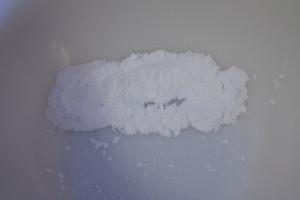
Make baking powder. In a bowl combine the baking soda and cream of tartar and mix thoroughly. When you think it is mixed, mix it one more time.
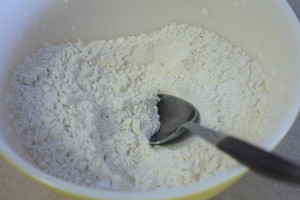
Add flour and salt. Again mix thoroughly. And even fluff up the mixture. You could sift it, but we don’t bother, we just fluff.
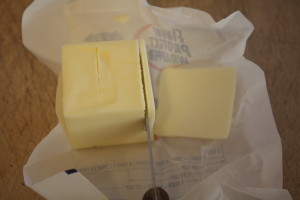
Add cold butter. Here’s where it can get tricky. Slice the butter into 1/16-inch thin squares and distribute over the top of the flour.
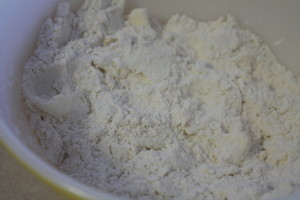
Press the butter slices into the flour. Work quickly, pressing each butter slice between your thumb and fingers to press into the flour and make the pieces even thinner. They will break apart. You want to end up with flakes of butter/flour mixture of different sizes. It’s okay if some are the size of your thumbnail.
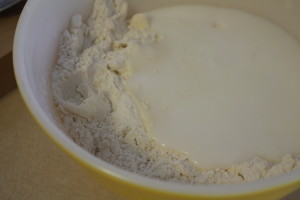
Add buttermilk. Pour the buttermilk over the top, and stir quickly until the dough just comes together, about 8 to 10 stirs.
Knead. Turn the dough out onto a floured work surface, and gently knead about 10 times. Kneading biscuits is more like fold-and-press, fold-and-press. Notice the layers that you’re building, that’s what makes biscuits flaky. But kneading also makes the dough tough, so you have to strike a balance between number of kneads (layers) and toughness.
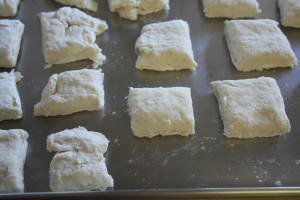
Cut biscuits. Press or roll dough to a thickness of 1/2-inch. If you want, you can cut the biscuits with a biscuit cutter — we don’t, they get eaten much too fast to bother — or just use a table knife. When cutting don’t use too much sawing motion, but, instead, press through the dough.
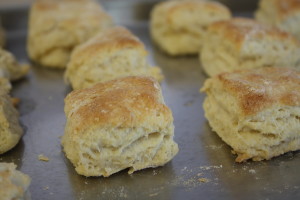
Bake. Place the biscuits on a baking sheet and bake on the top rack for 10-14 minutes. Check often, they bake fast. When they are lightly browned, they are done. Some people brush the tops with butter, but, we find they are fine as is.
Simple, huh? These make a quick side for dinners, or a quick and easy lunch (they are great with sliced cheese or jam), and, of course, there’s nothing like biscuits and eggs for breakfast. Five.
